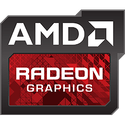
ASUS Unveils TUF Gaming A620-PRO WiFi ATX Motherboard
ASUS today unveiled the TUF Gaming A620-PRO WiFi, a Socket AM5 motherboard based on the entry-level AMD A620 chipset. When ASUS debuted its A620 motherboard lineup, it lacked a product in the ATX form-factor, and its top motherboard model at the time was the Micro-ATX TUF Gaming A620M-Plus WiFi. The new A620-PRO WiFi is feature-packed, and looks like a product from a segment above. It draws power from a combination of 24-pin ATX, and 8+4 pin EPS, and although you don't get CPU overclocking support with this chipset, there's plenty of CPU power delivery for even 12-core and 16-core processors. A 13-phase VRM conditions power for the processor.
The Socket AM5 is wired to four DDR5 DIMM slots, a PCI-Express 4.0 x16 slot, and two CPU-attached M.2 NVMe slots, each with PCI-Express 4.0 x4 wiring. A PCI-Express 3.0 x16 slot (electrical Gen 3 x2), and two Gen 3 x1 slots wired to the A620 FCH, make for the rest of the expansion feature-set. Besides the CPU-attached M.2 NVMe slots, you get four SATA 6 Gbps ports from the A620 chipset for storage. Display connectivity includes a DisplayPort and HDMI. Networking connectivity consists of a 2.5 GbE wired Ethernet driven by a Realtek 8125 series controller; and 802.11ax (WiFi 6), with Bluetooth 5.3 (possibly an Intel WLAN module). USB ports include two 10 Gbps USB 3.2 Gen 2 type-A, two 5 Gbps USB 3.2 Gen 1 type-A and type-C, and four 5 Gbps ports via two internal USB 3.2 headers or internal ports, besides a handful USB 2.0 headers. The onboard audio solution is driven by an entry-level Realtek ALC892 CODEC, with 7.1-channel analog jacks. The motherboard offers USB BIOS Flashback. The company didn't reveal pricing.
The Socket AM5 is wired to four DDR5 DIMM slots, a PCI-Express 4.0 x16 slot, and two CPU-attached M.2 NVMe slots, each with PCI-Express 4.0 x4 wiring. A PCI-Express 3.0 x16 slot (electrical Gen 3 x2), and two Gen 3 x1 slots wired to the A620 FCH, make for the rest of the expansion feature-set. Besides the CPU-attached M.2 NVMe slots, you get four SATA 6 Gbps ports from the A620 chipset for storage. Display connectivity includes a DisplayPort and HDMI. Networking connectivity consists of a 2.5 GbE wired Ethernet driven by a Realtek 8125 series controller; and 802.11ax (WiFi 6), with Bluetooth 5.3 (possibly an Intel WLAN module). USB ports include two 10 Gbps USB 3.2 Gen 2 type-A, two 5 Gbps USB 3.2 Gen 1 type-A and type-C, and four 5 Gbps ports via two internal USB 3.2 headers or internal ports, besides a handful USB 2.0 headers. The onboard audio solution is driven by an entry-level Realtek ALC892 CODEC, with 7.1-channel analog jacks. The motherboard offers USB BIOS Flashback. The company didn't reveal pricing.
























































